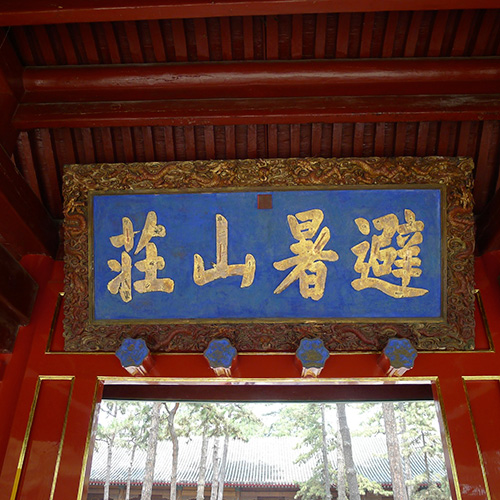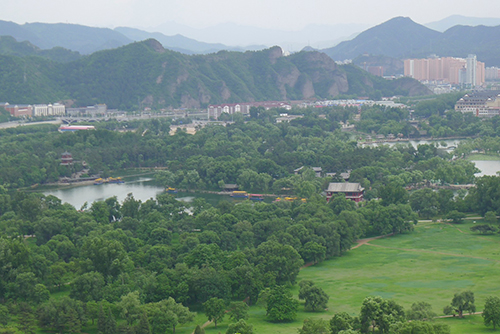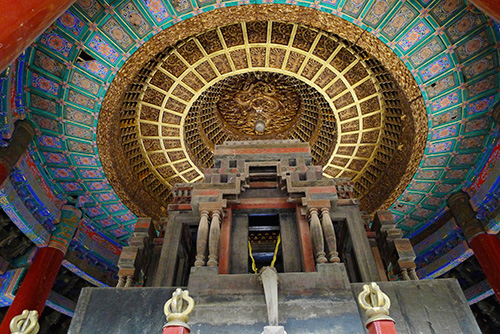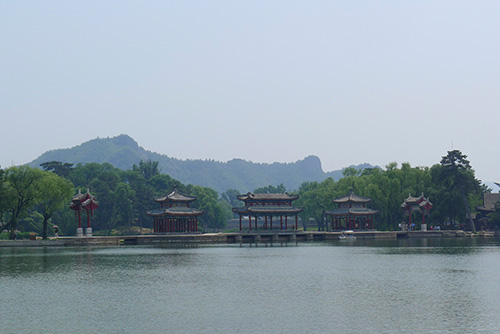-
Membership
Membership
Anyone with an interest in the history of the built environment is welcome to join the Society of Architectural Historians -
Conferences
Conferences
SAH Annual International Conferences bring members together for scholarly exchange and networking -
Publications
Publications
Through print and digital publications, SAH documents the history of the built environment and disseminates scholarship -
Programs
Programs
SAH promotes meaningful engagement with the history of the built environment through its programs -
Jobs & Opportunities
Jobs & Opportunities
SAH provides resources, fellowships, and grants to help further your career and professional life -
Support
Support
We invite you to support the educational mission of SAH by making a gift, becoming a member, or volunteering -
About
About
SAH promotes the study, interpretation, and conservation of the built environment worldwide for the benefit of all
Qing Architecture Beyond the Great Wall: Imperial Parks and Temples of Chengde
Nov 6, 2013
by
Stephen Whiteman
This image collection presents an extensive catalog of Qing (1644-1911) imperial architecture in and around the modern city of Chengde, Hebei province. The primary foci are Bishu shanzhuang 避暑山莊, the “Mountain Estate for Escaping the Summer Heat,” and a number of imperially sponsored Buddhist temples surrounding it.

Bishu shanzhuang was the primary summer residence and effective imperial capital for three Qing emperors of the 18th and early 19th centuries: Kangxi (r. 1661-1722), Qianlong (r. 1735-1795) and Jiaqing (r. 1795-1820).[1] At nearly 1400 acres, it was the largest of the Qing imperial park-palaces, a new typology of imperial landscape that joined elements of private and imperial gardens, palaces, and hunting parks.[2]
Development of the site occurred under two emperors, Kangxi and Qianlong. From 1703-1711, Kangxi focused on the center of the park-palace, dredging many of the larger lakes, building artificial islands, and constructing the earliest palaces and retreats. After a period of disuse following Kangxi’s death, Qianlong began by restoring and rebuilding Kangxi-era structures before significantly expanding the site, particularly in the southeastern corner and in the mountainous west and northwest. My research has more recently focused on dating specific structures wherever possible, and the dates assigned to structures recorded in the SAHARA collection reflect a conservative impulse in this regard.

Over the course of the 18th century, Kangxi and Qianlong also built twelve Buddhist temples ringing Bishu shanzhuang to the east and north. These sites combined elements of Chinese and Inner Asian temple architecture in a uniquely Qing hybrid style that reflected the diverse ethnic composition of the empire and its peoples’ varied religious beliefs.[3] Specifically, these temples often combined Tibetan practices with either Chinese architectural styles or unusual hybrid blends of Chinese and Inner Asian elements.

Following Jiaqing’s death in Chengde in 1820, likely of a stroke, the site fell into relative disuse. The Xianfeng emperor (r. 1850-1861) was the last emperor to visit Bishu shanzhuang, fleeing there in the face of the British sacking of Beijing in 1860. The later 19th and early 20th centuries saw significant deterioration at the site, decay poignantly, if ironically recorded in the 1930 photographs of the Japanese architectural historian Tadashi Sekino, who was part of a surveying team sent by the imperial government of Japan.[4] The designation of Bishu shanzhuang and the Surround Temples as UNESCO World Heritage Sites from 1994 has led to substantial restoration of imperial architecture around Chengde. This ongoing effort includes not only the rebuilding of lost or damaged structures, but also the maintenance of a modern tourist destination that sees over 12 million visitors per year in addition to significant usage by local residents. Out of both necessity and an interest in recording the process of historic preservation, therefore, this collection of photographs contains a number of images illustrating the restoration process, as well as photographs of both restored and unrestored foundations.

Bishu shanzhuang is just one of several extant Qing park-palaces, which in turn represent only a portion of the palaces, hunting parks, permanent camps and other installations that once constituted a web of imperial power expressed through architecture. The proposal for this image collection originally included photographs of the three major extant landscapes in greater Beijing, as well: Beihai Park, part of the Three Seas garden west of the Forbidden City, Yuanming yuan, or the “Old Summer Palace,” and Yihe yuan, now known as the Summer Palace. Unfortunately, the state of air pollution in Beijing during my period of travel made useful photography of these sites impossible.
SAHARA Travel Fellowship report by Stephen Whiteman of the Center for Advanced Study in the Visual Arts, National Gallery of Art.
[1] Kangxi’s son, Yongzheng (r. 1722-1735) never went to Bishu shanzhuang as emperor. After Jiaqing’s death at Bishu shanzhuang in 1720, imperial use was much more intermittent, ceasing with his grandson Xianfeng’s death there in 1860.
[2] Cary Y. Liu, “Archive of power: the Qing dynasty imperial garden-palace at Rehe,” Meishushi yanjiu jikan 美術史研究集刊 28, 2010, pp. 43-66 (44f); Stephen H. Whiteman, “From Upper Camp to Mountain Estate: Recovering Historical Narratives in Qing Imperial Landscapes,” Studies in the History of Gardens and Designed Landscapes 33.4 (2013), forthcoming (n. 3).
[3] See Anne Chayet, Les Temples de Jehol et Leurs Modèles Tibétains (Paris: Editions Recherche sur les civilisations, 1985).
[4] Sekino Tadashi, et. al., Nekka (Tokyo: Zauho Press, 1934).


